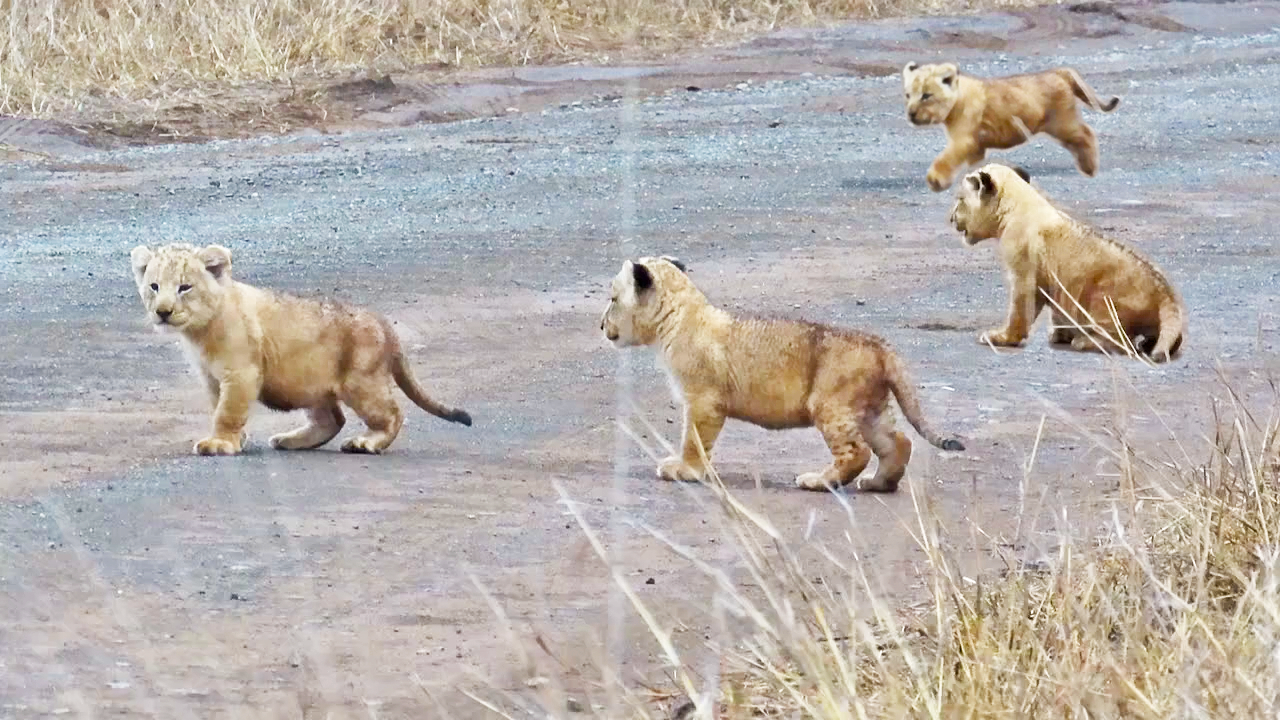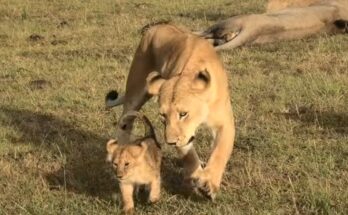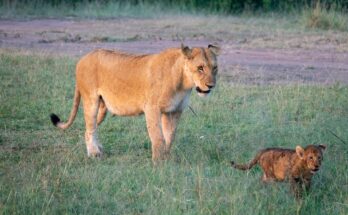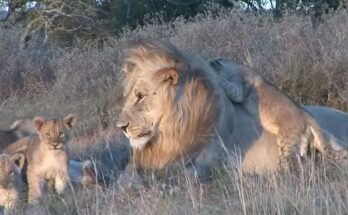
In a heartwarming scene filmed in South Africa’s Kruger National Park, a group of adorable lion cubs is seen following closely behind their mother as she confidently leads them across a dusty road. The tiny cubs, still covered in sandy-colored fur adorned with faint rosettes and spots, appear both curious and playful. These markings are typical of young lions and serve as camouflage in the wild, although they tend to fade as the cubs grow older and develop the more uniform coats of adult lions.
As they pad along, the mother lion lets out a deep, thunderous roar that echoes across the savannah. The cubs, eager to mimic her, try to roar along with her—but their tiny, squeaky attempts are more charming than intimidating. This moment not only highlights the cuteness of these young lions but also showcases the way lion cubs learn vital behaviors by observing and imitating their parents.
The adult lion’s roar is one of the most powerful sounds in the animal kingdom. A single roar can reach up to 114 decibels, about 25 times louder than a petrol-powered lawnmower, and can travel as far as 8 kilometers (5 miles). Roaring serves an important role in lion society: it helps pride members stay in contact and warns rival lions to stay away from their territory.
This captivating footage is a reminder of the raw beauty and natural behavior of wild lions in their natural habitat. It offers a rare glimpse into the early life of these future kings and queens of the savannah, learning their first lessons in communication and survival under the watchful eye of their mother.


